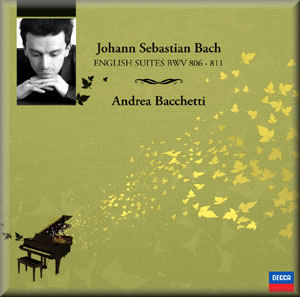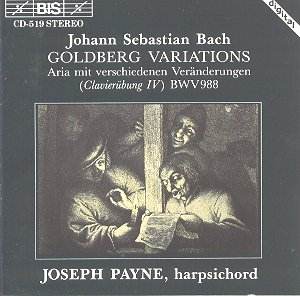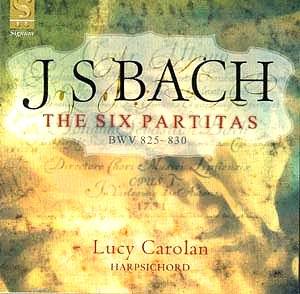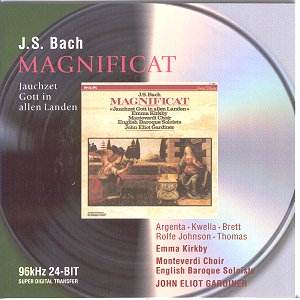Andrea Bacchetti’s Elegance in Bach’s English Suites BWV 806–811
 Even with years of sifting through the sounds of countless records, pinning down those elusive qualities that make a recording instantly captivating can still send shivers down my spine. It’s a game of intuition—one moment you’re skeptical, the next you’re enveloped in sound.
Even with years of sifting through the sounds of countless records, pinning down those elusive qualities that make a recording instantly captivating can still send shivers down my spine. It’s a game of intuition—one moment you’re skeptical, the next you’re enveloped in sound.
Take the Fazioli Concert Hall, for instance. Initially, I had my reservations about its acoustics, but once the music began to flow, those worries melted away. Still, I’ll confess, even in this celebrated venue, there’s a subtle mid-range bump that can hover over the piano’s clarity, making me wonder if we’ve hit a snag in the sound quality.
The debate over instrument choice and its influence on interpretation is an intricate dance, and I feel it deserves a deeper dive. It’s a minor issue, but one that lingers in my mind. However, let me tip my hat to the Decca engineers; their touch on the English Suites is nothing short of alchemical. They’ve taken the already exquisite compositions and elevated them further, much to my delight.
And then there’s Andrea Bacchetti. This guy plays the Fazioli like he’s having a conversation with it; every note resonates with purpose. It’s a mystery how he achieves such clarity and richness, but the result is an auditory experience that lingers long after the last chord has faded. Yet, I can’t help but feel a void in the discussion—Riccardo Risaliti’s writings are insightful, but Bacchetti’s own voice is notably absent, leaving me hungry for his perspective on the English Suites.
Bacchetti’s take on Bach’s Goldberg Variations is refreshingly honest. He weaves in nods to titans like Glenn Gould and Murray Perahia, while his interpretation brims with dramatic complexities and harmonic twists. His recent DVD/CD release stands as a testament to his remarkable talent, breathing life into the fugue with an intensity that demands attention.
When it comes to Bach’s English Suites, Bacchetti occupies a unique space. He balances the vivacity of Gould with the elegance of Perahia. In sheer vigor and power, I’d argue he eclipses Perahia—his commanding approach is impossible to ignore.
I have to say, Bach’s Courante I from the English Suite No. 1 is a rare gem, often overlooked in complete renditions. The contrasting interpretations really highlight the nuances of Bach’s work; where Perahia delights with playful ornamentation, Bacchetti’s symphonic touch evokes a harpsichord’s grandeur.
Bacchetti’s mastery of ornamentation, rooted in French tradition, reveals the true essence of these pieces, often mislabelled as ‘English’. His bold interpretation of the first Courante juxtaposes beautifully with the refined delicacy of Courante II, showcasing his range.
And let’s not forget Taruskin’s praise for the heartfelt treatment of the Sarabande—both Bacchetti and others nail it. Yet, the varied interpretations of Bach’s English Suite No. 3 lay bare the complexity of the work. Bacchetti’s steadfast adherence to the original slow dance origins contrasts sharply with Perahia’s more buoyant energy.
Bacchetti’s rendition of the English Suite No. 2 Sarabande strikes a perfect balance between timeless essence and contemporary flair, making it a go-to for emotional depth. His entrance in these performances is nothing short of commanding—certainly a head-turner.
There’s a delicate interplay between weight and lightness in his interpretations. If mishandled, it could come off as heavy-handed, especially as the music begins to thin. Bacchetti’s approach evokes the orchestral music of Bach’s time, blending scoring and technique with finesse.
And while Perahia’s playing may not be traditionally feminine, together with Bacchetti, they peel back layers of sentimentality to reveal the heart and soul of each Suite, particularly in the tender Sarabande.
Bach’s English Suites, as Bacchetti interprets them, unveil an entrancing beauty that draws us into the composer’s elusive essence. The intricate ornamentation in the Courante of English Suite No. 4 echoes the opulence of French Baroque, akin to Rameau’s work.
If you want to experience the vibrant energy of Bach, look no further than Bacchetti’s take on the English Suite No. 5. It’s an electrifying display of technical brilliance. And let’s not confuse the absence of sentimentality with a lack of emotional depth; breathtaking moments abound, stirring a tear or two.
In the Allemande of English Suite No. 6, Bach’s brilliance shines, capturing profound emotions in the poignant opening, especially in D minor. Taruskin’s insights into tactile two-part writing resonate, bringing Bacchetti’s touch to life.
I mean, who can forget Glenn Gould’s quixotic fervor? His recordings from the ’70s are unforgettable, and through the magic of film, we glimpse the mind of this extraordinary pianist, far beyond what any other artist can offer.
Since 2003, Angela Hewitt has captivated listeners with her Hyperion performances, but I find myself pondering Bacchetti’s place among these giants. Can he stand shoulder to shoulder with the best?
In my humble opinion, I can only share my perspective. And for the Gould aficionados among us, Bacchetti’s English Suites might just hit that sweet spot of technical mastership and natural expression you’ve been yearning for.
We must not overlook the stark contrast between the bold drama and gentler introspection that Bacchetti brings to the table. His recording may not please everyone, but its distinctive character makes it a worthy addition to any Bach lover’s collection.
As I reflect on my musical journey, I find myself enraptured by the melodies that have accompanied me, forever grateful for the brilliance captured through modern technology.




